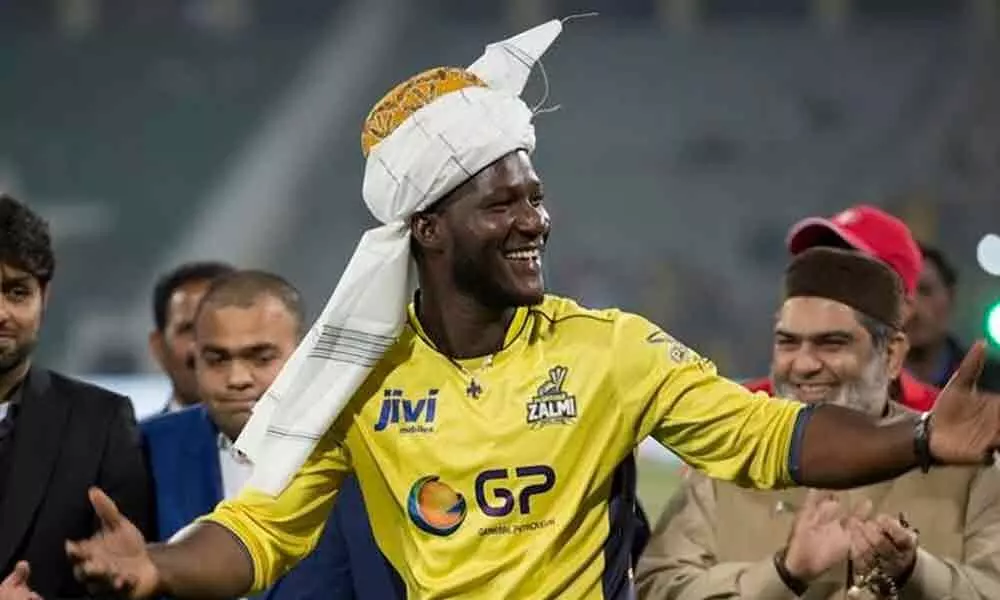Live
- Iran: 1 killed, 21 injured after bus overturns
- Welfare hostels shut as bills pile up
- CM Revanth Reddy Slams BJP Leaders Over Inaction
- Minister Ponguleti visits Basara temple
- Ashutosh Gowariker to lead International Jury at IFFI 2024
- The global challenges of greener aviation
- Shreyas Media secures exclusive advertising rights for ‘MahaKumbh Mela 2025’
- Experience the journey of art
- Seven iconic ghats undergo makeover for Mahakumbh
- Smog engulfs capital with ‘severe’ air quality
Just In

he racist remark brought to the fore by the West Indians, Jason Holder and Darren Sammy, on being called "Kalu" in India by their teammates and the crowd does make one feel sorry for them
The racist remark brought to the fore by the West Indians, Jason Holder and Darren Sammy, on being called "Kalu" in India by their teammates and the crowd does make one feel sorry for them.
However, both these players have played enough cricket in India to realise that such banter is in the DNA of cricket in India. This is a case of being oblivious to the culture of the sport as one encounters it everywhere.
As a cricketer I faced such remarks while playing overseas as well as in India. One was naturally upset and at times angry but on many an occasion, it was just a way for teammates to tease you. India's famous wicketkeeper, Syed Kirmani, lovingly called me "Pit Pit Singh" as he felt I spoke too much.
Many of my teammates called me "Bapu" not because of Mahatma Gandhi but because of being from a Royal Rajput family.
Therefore, being given a nickname was a common occurrence in Indian cricket and words like "Motu" for fat, "Lambu" for tall, "Chotu" for being short, "Gora" for being fair, "Taklu" for being bald and many such words are now a part and parcel of the cricketing dictionary in India.
India, with so many languages and dialects, brings even more spice to the vocabulary of the cricket fans. There have been many occasions when even an Indian cricketer is as much at sea on being called a name quite similar to what the West Indian cricketers faced.
Giving names to a cricket colleague is an accepted practice and taking offense and asking for an apology is quite ridiculous. Sammy has played enough cricket over the years in India to realise that such banter should stay in the confines of the dressing room rather than making it into a public spectacle.
The concerning issue as regards racism is when spectators and fans scream abusive personal remarks at an individual cricketer.
Unfortunately, not only cricket but all sports around the world reek of spectators and fan followers targeting a sportsman as their private property and a commodity who can be insulted whenever they please.
One felt that with the world becoming more diverse and more progressive and educated, colour, creed and other forms of physical differentiation would have finally been put to rest.
This somehow has not happened as incidents of abusive language has continued to increase amongst the crowd watching sports.
In India, life has never been a bed of roses for a cricketer where racist or abusive remarks are concerned. Many feel it is there birthright to say hurtful remarks about celebrities.
Even the greats like Sunil Gavaskar, Kapil Dev or Sachin Tendulkar, were all booed or abused in India or by their own Indian supporters abroad.
One of the first star cricketers to have been the victim of racial remarks was none other than the great Indian prince Ranjitsinhji.
He was the darling royal prince and a genius when he did well for England but when he failed to perform, he faced the ignominy of the English language from the same public that had praised him earlier.
There was an interesting anecdote when Ranji went in to bat and played some marvelous strokes. An English spectator watching him bat eulogised his batting by calling him "our blue blooded prince of English cricket", but as soon as Ranji got out, he hollered " bloody Indian".
The present international cricketers with enormous media exposure are superstars. It has now become essential for them to go through a sensitisation program and learn how to behave in such situations.
Among cricketers, the earlier ones faced plenty of sledging from their opponents. However, one was told that it was a part and parcel of growing up and so one took it in ones stride. This fortunately is now at an ebb, especially because of the microphones on the ground and the cameras capturing every movement of the players.
The concerning issue, however, is that of the spectators at the ground. One way of controlling this would be to have CCTV's with microphones placed at every stand of the stadium. Putting the culprit in jail and with heavy fine would be a good way to curtail such behaviour.
Cricket will finally see the light of the day when England take on the West Indies at home. Every cricket lover will pray that all goes well and that cricket becomes a part of their life once again. With no spectators on the ground, a cricketer will play in an atmosphere of peace and quiet. One where abusive retorts will remain in the confines of their homes.
The COVID-19 pandemic, in the meanwhile, has created a complete turmoil in the cricketing calendar. However, it has taught all of us that it does not differentiate on colour, caste, race or religion and has the world united in everyone fighting the common enemy.
Racism also has no place in cricket and this pandemic too needs everyone to play a part in eradicating it from the royal game.
(Yajurvindra Singh is a former Test cricketer. Views expressed are personal)

© 2024 Hyderabad Media House Limited/The Hans India. All rights reserved. Powered by hocalwire.com







